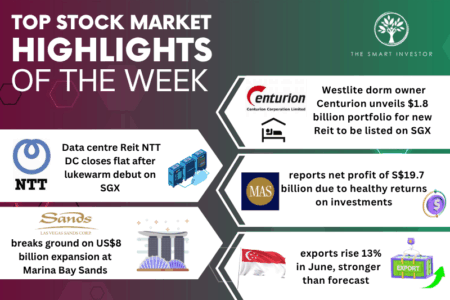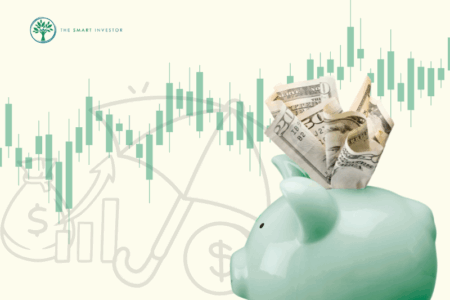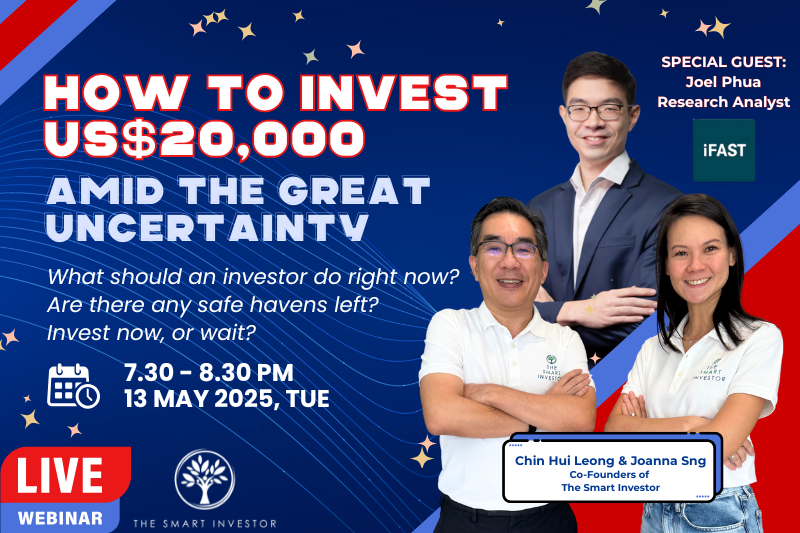The NASDAQ (INDEXNASDAQ: .IXIC) closed at all-time highs last Friday amid the US Federal Reserve’s affirmation of interest rate cuts later this year.
Already, the tech-heavy index has risen by over 11% since the start of the year.
The investors who remained vested in the US stock market (that’s us!) are happy with their gains. For others, however, there is a lingering worry over how long the bull market rally will last.
The concern is apparent from the chatter around us.
Why keep buying stocks when there are “obvious” warning signs?
Isn’t the market already near its top?
What is the stock’s valuation?
As you can see, everyone expresses their fears differently.
Questions on valuations, for instance, belie the true feeling of dread that danger is just around the corner.
Why else would you be asking about valuation when markets are feeling rich?
Here’s what investor’s will miss: getting your expectations right is the key.
Comfortably wrong
Valuing a stock is part and parcel of being an investor.
Some interpret valuation as the act of deriving a target price for a stock.
It’s not a surprise.
The idea of having a reference figure where you can buy or sell a stock is a comforting thought.
However, the premise doesn’t hold up to reality.
Calculating a stock’s value can indeed give you a number.
However, this exercise does not determine where the stock will trade.
Buying a stock based on a target price does not mean the share price will not go lower compared to the stock value you calculated.
In the short term, shares will move up and down according to the market’s whims.
If the market is feeling optimistic, as it is today, most stocks will be awarded higher earnings multiples.
On the other end, if the market’s mood sours, stocks will be slammed with lower multiples.
The more reliable factor, in our eyes, is business growth.
Building on a solid foundation
Putting more effort into your valuation does not mean you will get a more accurate target price.
The number of spreadsheets you use will not hold a candle against the winds of common market volatility.
Consider a simple valuation model where a stock price has two components:
- The business’s free cash flow (FCF) per share
- The price-to-FCF ratio (P/FCF)
Multiply the two numbers above and you get the share price.
Here’s the rub: in the short term, the stock price will be dominated by the movement of the P/FCF.
For instance, if you buy a stock with an FCF per share of $1 and a P/FCF of 10, your buy price will be $10. Now, think about how this stock price can change in the near term:
- If the FCF per share remains at $1 and the P/FCF drops to 8, then your stock price will drop to $8 per share.
- On the other hand, if the FCF per share remains at $1 and the P/FCF rises to 12, then your stock price will increase to $12 per share.
The driver behind the stock price is purely the P/FCF in these two cases.
Here’s the thing: businesses need time to grow.
Consider another two scenarios based on two different timelines:
- A business increased its FCF per share to $1.15 within a year. However, the P/FCF multiple fell to 8 at the same time. The product of these two numbers is $9.20 ($1.15 times 8) which is lower than your original buy price of $10.
- Five years later, the same business managed to up its FCF per share to $2. Again, the market is pessimistic and only gives the stock a P/FCF of 8. This time, however, the stock price would be $16 ($2 times 8).
The first scenario is what tends to happen in the short run where the ratio’s influence is dominant.
Trying to conjure up a target price based on one-year timeframes is like building your house on sand, the foundation will crumble as soon as the market exhibits any volatility.
The second scenario is what investors should focus on.
If you choose the right business, and give it time to grow, then even the winds of volatility will not hinder you from getting the market returns you seek.
Get Smart: When elephants jump
Does the above sound too good to be true?
Well, let me share a real-life example.
Back in June 2020, the Smart All Stars Portfolio bought Microsoft (NASDAQ: MSFT) shares at US$199.46 per share.
Here are the two parameters you need to know:
- Microsoft’s FCF per share was US$5.65
- Hence, the stock’s P/FCF ratio was 35.3.
Fast forward to today and the stock has more than doubled to US$428.74 per share as of last Friday.
So, which one of the two parameters did the heavy lifting?
Here’s the numbers again, based on Friday’s close:
- Microsoft’s FCF per share grew to US$9.03, or around 60% higher than the FCF per share of US$5.65 when we first bought its shares.
- The stock’s P/FCF also rose from 35.3 times to 47.1 times, or over 33% higher.
In short, it was the FCF which did more of the hard work lifting the share price up.
Here’s the thing: even if the P/FCF were to fall back to 35.3 times today, the stock would still be up by over 60% or an annualised gain of 13.4% per year (excluding dividends).
What’s not to like?
The secret is patience and time.
Time for the business to grow.
Time for the FCF per share to reflect the true potential of the business.
Time for the FCF to lift the share price, despite all the market volatility along the way.
In other words, all we have to do is to pick the right stocks, look past the short term, and be willing to hold when winds of volatility inevitably come.
If you can do that, I submit that the stock’s long-term growth will make a pleasing mockery of your short-term worries.
If you’re wondering about how you can leverage AI in your investment portfolio, and how it can boost your portfolio, good news! We just released an urgent Special Free Report to cover everything you need to know about AI and its implications for investors. Find out which listed companies are actively using AI to power their businesses and what you should do to prepare for the AI boom. Click here to download your free report now.
Follow us on Facebook and Telegram for the latest investing news and analyses!
Disclosure: Chin Hui Leong owns shares of Microsoft.





